Fitness at Any Age: Understanding and Overcoming Age-Related Challenges
As we age, our bodies undergo a range of physiological changes that impact fitness levels. However, staying fit and healthy is achievable at any age with the right approach. This blog explores how age affects fitness, the considerations for different age groups, and offers tips on adapting workouts to ensure a healthy, active lifestyle throughout the years.
The Impact of Age on Fitness
Aging is a natural process, and as we grow older, our bodies experience changes that influence our fitness levels. Here are some key age-related changes:
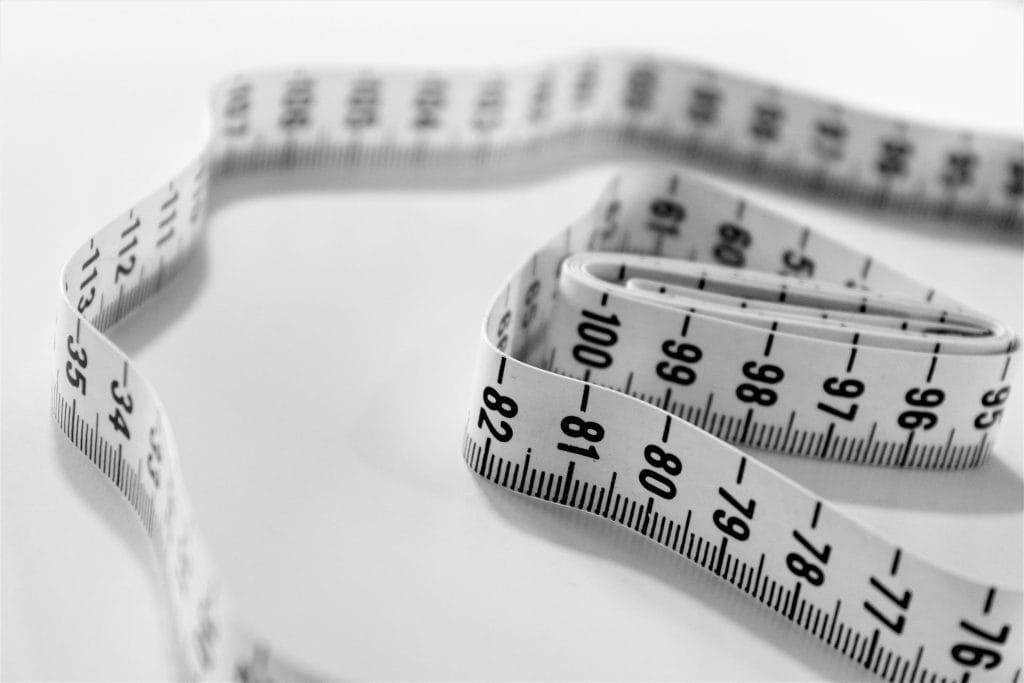
Decreased Muscle Mass and Strength (Sarcopenia):
- In Your 30s and 40s: Muscle mass starts to decline by about 3-8% per decade after the age of 30, a condition known as sarcopenia. This decline can lead to decreased strength and endurance.
- In Your 50s and Beyond: The rate of muscle loss accelerates, and maintaining muscle mass becomes more challenging. Reduced muscle strength can impact balance and increase the risk of falls.
Slower Metabolism:
- In Your 20s and 30s: Metabolism is generally at its peak, making it easier to maintain a healthy weight. However, by the late 30s, metabolic rate begins to slow down, leading to potential weight gain if caloric intake isn’t adjusted.
- In Your 40s and 50s: The decline in metabolism becomes more pronounced, and many people find it harder to lose weight. Hormonal changes, particularly in women during menopause, can also contribute to weight gain.
Joint Health and Flexibility:
- In Your 20s and 30s: Joints are typically healthy and flexible, allowing for a wide range of motion in physical activities.
- In Your 40s and Beyond: Joints may begin to stiffen, and conditions such as osteoarthritis can develop, leading to discomfort and reduced mobility. Flexibility can also decrease, making it harder to perform certain exercises.
Cardiovascular Health:
- In Your 20s and 30s: The cardiovascular system is usually at its most robust, supporting high-intensity workouts and endurance activities.
- In Your 40s and Beyond: Cardiovascular capacity may decline, and the risk of heart disease increases. Regular aerobic exercise becomes essential for maintaining heart health.
Fitness Considerations for Different Age Groups
Given the physical changes associated with aging, it’s essential to adapt fitness routines to suit different life stages. Here’s a look at the key considerations for each age group:
In Your 20s and 30s: Building a Strong Foundation
Your 20s and 30s are ideal for building a strong fitness foundation. During these years, your body is generally resilient, and you can push your limits to achieve peak physical performance.
- Focus on Strength Training:
- Why it Matters: Building muscle mass in your 20s and 30s sets the stage for long-term health. Increased muscle mass not only enhances physical appearance but also boosts metabolism and strengthens bones.
- What to Do: Incorporate resistance training at least 2-3 times per week. Focus on compound movements like squats, deadlifts, and bench presses, which work multiple muscle groups at once. These exercises help build a strong, balanced physique and improve overall functional strength.
- Example Routine: A workout could include 3 sets of 8-12 repetitions of squats, deadlifts, bench presses, pull-ups, and rows.
- High-Intensity Workouts:
- Why it Matters: High-Intensity Interval Training (HIIT) is effective for improving cardiovascular health, burning fat, and maintaining a high metabolic rate.
- What to Do: Incorporate HIIT sessions 1-2 times a week. These sessions can be as short as 20-30 minutes but are highly effective in improving fitness levels.
- Example Routine: A HIIT workout could involve 30 seconds of sprinting followed by 30 seconds of walking, repeated for 20 minutes.
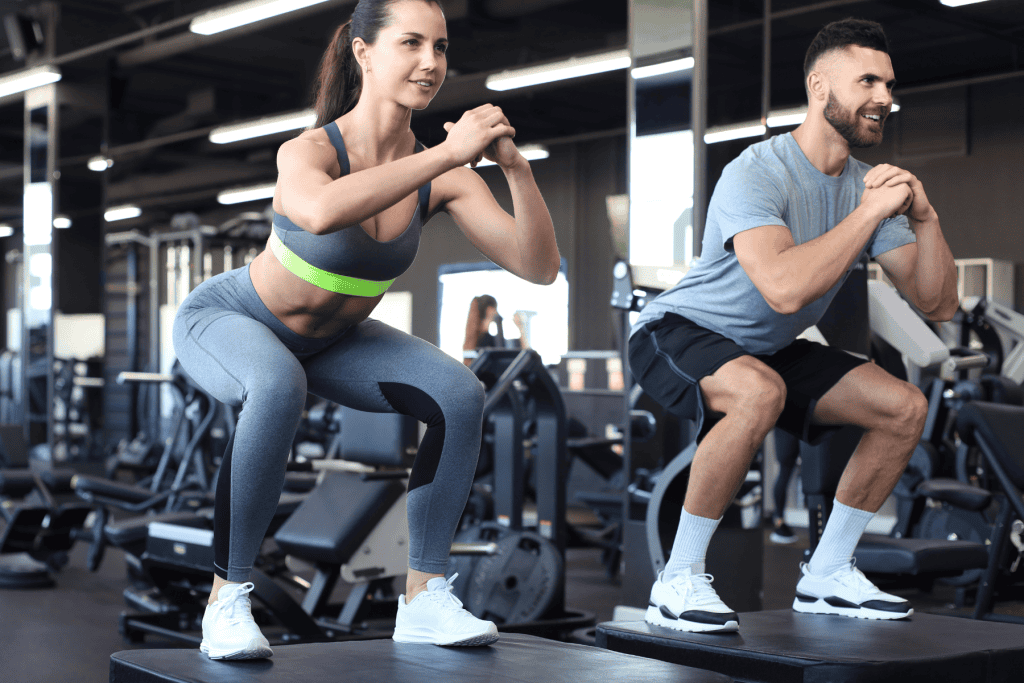
- Flexibility and Mobility:
- Why it Matters: Maintaining flexibility and mobility helps prevent injuries, especially as you push your limits in other areas of fitness.
- What to Do: Include yoga or dedicated stretching sessions 2-3 times a week to maintain and improve flexibility. Focus on dynamic stretches before workouts and static stretches afterward.
- Example Routine: Spend 5-10 minutes on dynamic stretches like leg swings and arm circles before exercise, and follow up with static stretches like hamstring stretches and calf stretches afterward.
- Consistency is Key:
- Why it Matters: Building consistency in your 20s and 30s creates a habit that will serve you well into later life. Regular exercise supports mental health, aids in stress management, and improves sleep quality.
- What to Do: Aim to exercise at least 4-5 times per week, mixing strength, cardio, and flexibility training. Develop a routine that fits your lifestyle and stick to it.
- Example Routine: A balanced week might include 3 days of strength training, 2 days of cardio (such as running or cycling), and 2 days of flexibility work.
In Your 40s and 50s: Adapting to Changing Needs
As you enter your 40s and 50s, it’s essential to adjust your fitness routine to accommodate the natural changes your body is undergoing.
- Strength Maintenance:
- Why it Matters: Muscle mass naturally declines with age, so continuing strength training is crucial to maintain muscle and bone density.
- What to Do: Focus on maintaining strength rather than building it. Incorporate lighter weights with more repetitions to reduce the risk of injury while still challenging your muscles.
- Example Routine: Perform 3 sets of 12-15 repetitions of exercises like leg presses, chest presses, and lat pulldowns. Include exercises that target core strength, such as planks and bird-dog exercises, to support joint stability.
- Cardiovascular Health:
- Why it Matters: Cardiovascular fitness tends to decline with age, and heart health becomes more critical. Regular aerobic exercise helps maintain cardiovascular function and reduces the risk of heart disease.
- What to Do: Engage in moderate-intensity cardio activities like brisk walking, swimming, or cycling for at least 150 minutes per week. Mix in some low-impact exercises to protect your joints.
- Example Routine: A weekly routine might include 30-minute sessions of brisk walking or cycling 5 times a week, with one session of swimming for variety.
- Balance and Flexibility:
- Why it Matters: As balance and flexibility decline with age, incorporating exercises that improve these areas can prevent falls and injuries.
- What to Do: Incorporate balance exercises, such as single-leg stands or heel-to-toe walks, and regular stretching into your routine. Yoga and tai chi are excellent for improving both balance and flexibility.
- Example Routine: Spend 10-15 minutes daily on balance exercises and stretching. A yoga session once or twice a week can be highly beneficial.
- Mindful Eating:
- Why it Matters: A slower metabolism means you may need to adjust your diet to avoid weight gain. Eating mindfully helps maintain a healthy weight and provides the necessary nutrients for muscle maintenance.
- What to Do: Focus on a balanced diet rich in protein, fiber, and healthy fats. Reduce processed foods and be mindful of portion sizes.
- Example Routine: Include protein-rich foods like lean meats, fish, and legumes in every meal. Add plenty of vegetables and whole grains, and limit sugary snacks and drinks.
In Your 60s and Beyond: Emphasizing Longevity and Quality of Life
In your 60s and beyond, fitness should focus on maintaining mobility, preventing injury, and enhancing overall quality of life:
- Low-Impact Exercises:
- Why it Matters: Low-impact exercises protect your joints while keeping you active. These exercises reduce the risk of injury and are sustainable over the long term.
- What to Do: Engage in activities like walking, swimming, or water aerobics. These exercises are gentle on the joints but effective in maintaining cardiovascular health and overall fitness.
- Example Routine: A daily 30-minute walk, supplemented by swimming sessions 2-3 times a week, can provide a well-rounded routine.
- Gentle Strength Training:
- Why it Matters: Maintaining muscle mass is crucial for mobility and independence in later years. However, it’s essential to avoid overexerting joints.
- What to Do: Use light weights or resistance bands to perform strength exercises that target major muscle groups. Focus on bodyweight exercises that can be done at home, such as wall push-ups, chair squats, and seated leg raises.
- Example Routine: Perform 2-3 sets of 10-15 repetitions of exercises like seated leg extensions, wall push-ups, and resistance band rows 2-3 times a week.
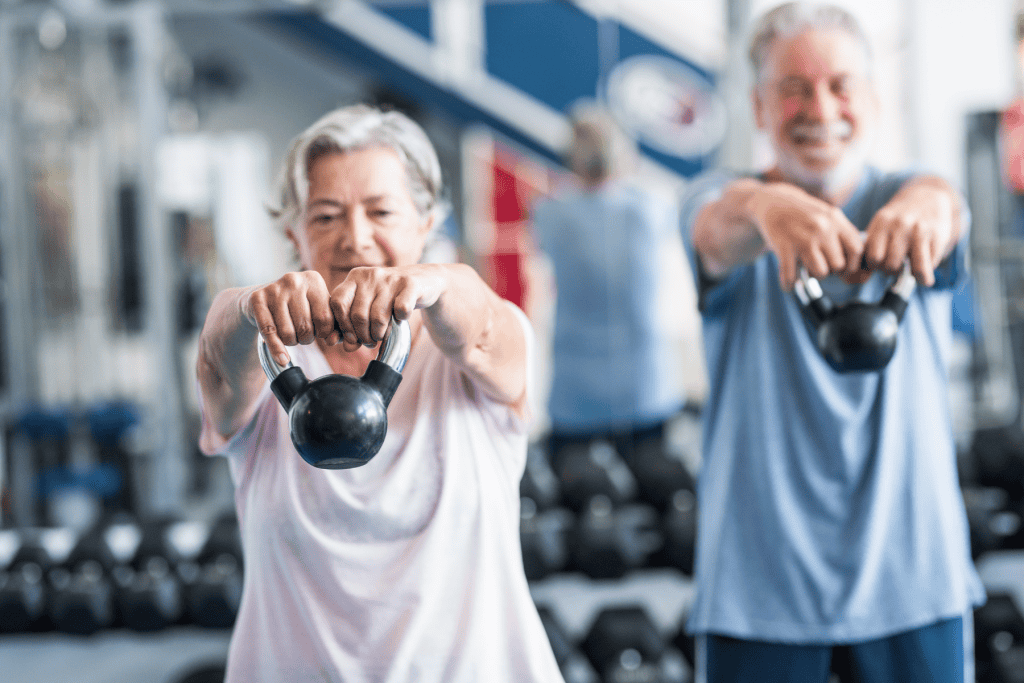
- Flexibility and Balance:
- Why it Matters: Flexibility and balance exercises help prevent falls and maintain mobility. These exercises are crucial for staying active and independent.
- What to Do: Incorporate activities like yoga or tai chi, which improve balance, coordination, and flexibility. Regular stretching should also be a part of your routine.
- Example Routine: Participate in a 30-minute tai chi session or gentle yoga class 2-3 times a week, along with daily stretching exercises focused on major muscle groups.
- Stay Social and Engaged:
- Why it Matters: Social interaction and mental stimulation are essential for overall well-being and can make physical activity more enjoyable and sustainable.
- What to Do: Join group exercise classes, walking clubs, or sports leagues designed for seniors. Socializing during physical activities can help keep you motivated and engaged.
- Example Routine: Participate in group fitness classes, such as water aerobics or senior yoga, at a local community center. This not only keeps you active but also provides a social outlet.
Universal Tips for Staying Fit at Any Age
No matter your age, these tips will help you maintain fitness and overall health:
- Listen to Your Body:
- Why it Matters: As you age, your body’s ability to recover from exercise changes. Paying attention to your body’s signals helps prevent overtraining and injuries.
- What to Do: Modify your workouts based on how you feel. If you’re experiencing pain or discomfort, it’s essential to rest or switch to a less intense activity. Incorporate rest days as needed.
- Example: If you notice joint pain after running, switch to low-impact activities like swimming or cycling until the discomfort subsides.
- Set Realistic Goals:
- Why it Matters: Setting achievable goals keeps you motivated and on track. Unrealistic expectations can lead to frustration and burnout.
- What to Do: Tailor your fitness goals to your age, current fitness level, and lifestyle. Set both short-term and long-term goals that are challenging yet attainable.
- Example: A realistic goal might be to walk 10,000 steps a day or to increase the amount of weight you lift by 5% over a month.
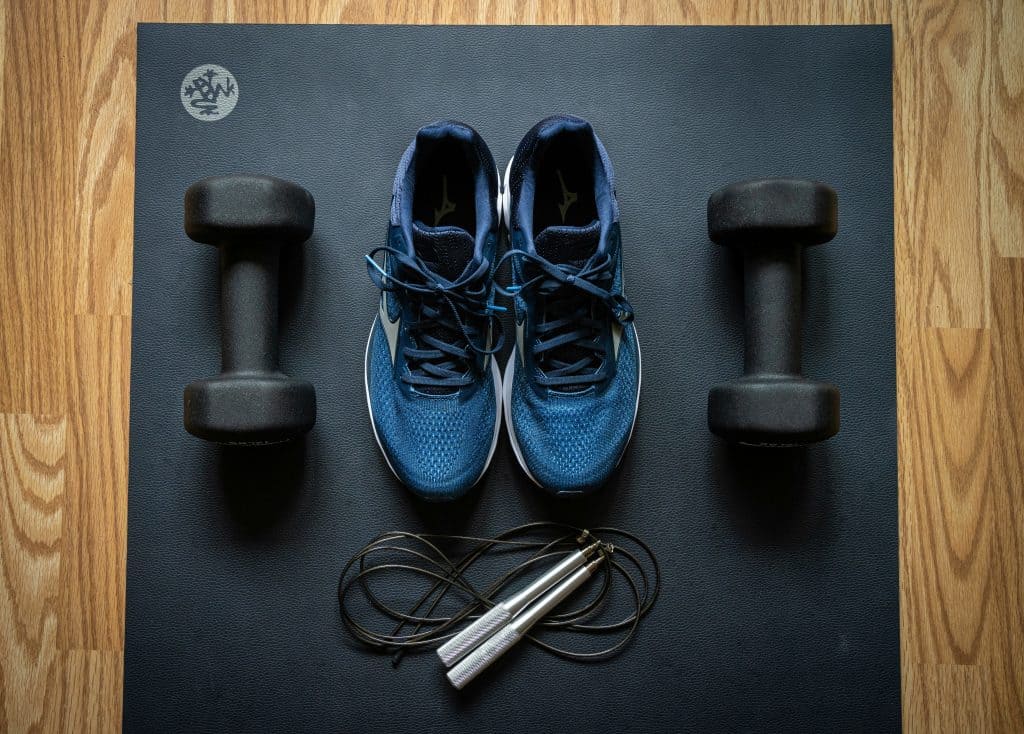
- Stay Consistent:
- Why it Matters: Consistency is the key to long-term success in fitness. Regular exercise, even if it’s moderate, provides cumulative health benefits.
- What to Do: Aim to engage in physical activity most days of the week. Find activities you enjoy, which makes it easier to stick to a routine.
- Example: If you enjoy dancing, sign up for a weekly dance class or dance at home to your favorite music as part of your regular exercise routine.
- Prioritize Recovery:
- Why it Matters: Recovery is crucial, especially as your body takes longer to heal as you age. Proper recovery ensures that you can continue to exercise regularly without injury.
- What to Do: Incorporate rest days into your routine and ensure you get enough sleep. Consider active recovery activities like light stretching, walking, or yoga.
- Example: After a tough workout, take a rest day or do a gentle yoga session to help your muscles recover.
- Stay Hydrated:
- Why it Matters: Hydration is essential for all bodily functions, including muscle function and recovery. Dehydration can lead to fatigue, cramps, and other health issues.
- What to Do: Drink water throughout the day, especially before, during, and after exercise. Older adults may need to be more conscious of hydration, as the sense of thirst can diminish with age.
- Example: Carry a water bottle with you and set reminders to drink water at regular intervals, especially during warmer months or intense workouts.
- Seek Professional Guidance:
- Why it Matters: A fitness professional or physical therapist can help you create a safe and effective exercise plan tailored to your needs and goals. They can also help prevent or address injuries.
- What to Do: Consider working with a certified personal trainer, especially if you’re new to exercise or have specific health concerns. Regular check-ins can help keep you on track.
- Example: Schedule a consultation with a personal trainer at Peak Fitness today to assess your current fitness level and create a personalized workout plan. This is especially important if you’re dealing with chronic conditions or recovering from an injury.
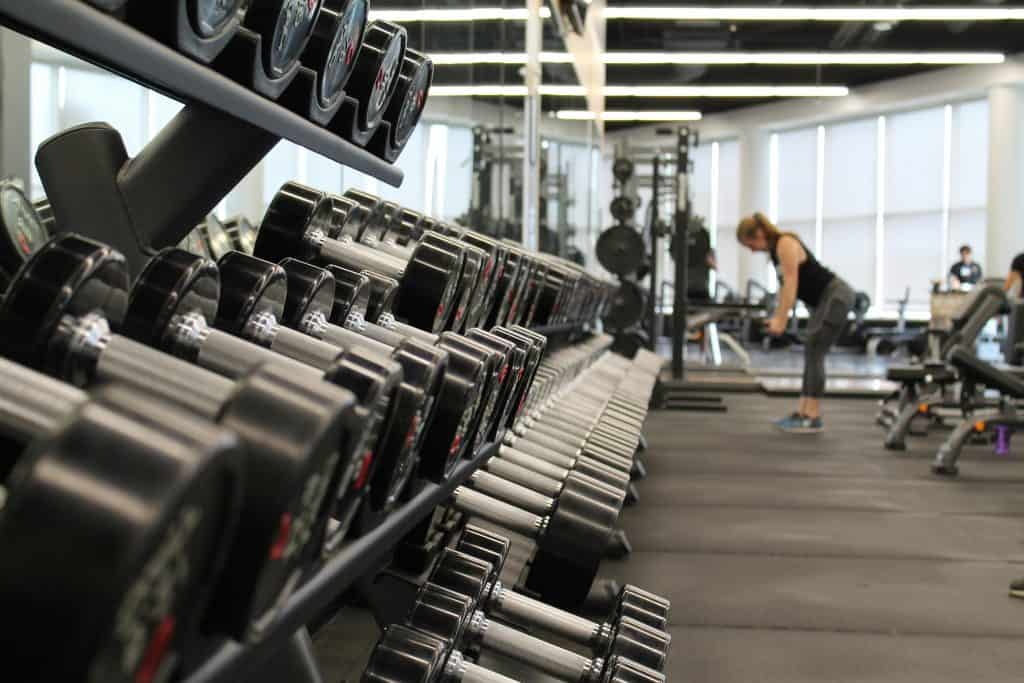
Understanding how age impacts fitness and adapting your routine accordingly is crucial for maintaining a healthy, active lifestyle at any stage of life. By focusing on strength, cardiovascular health, flexibility, and balance, and by following universal fitness tips, you can stay fit and enjoy a high quality of life well into your later years. Remember, it’s never too late to start, and even small changes can make a significant difference in your overall health and well-being. Stay active, listen to your body, and embrace the journey of fitness through the years.
